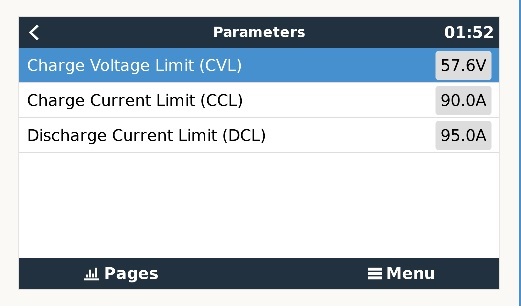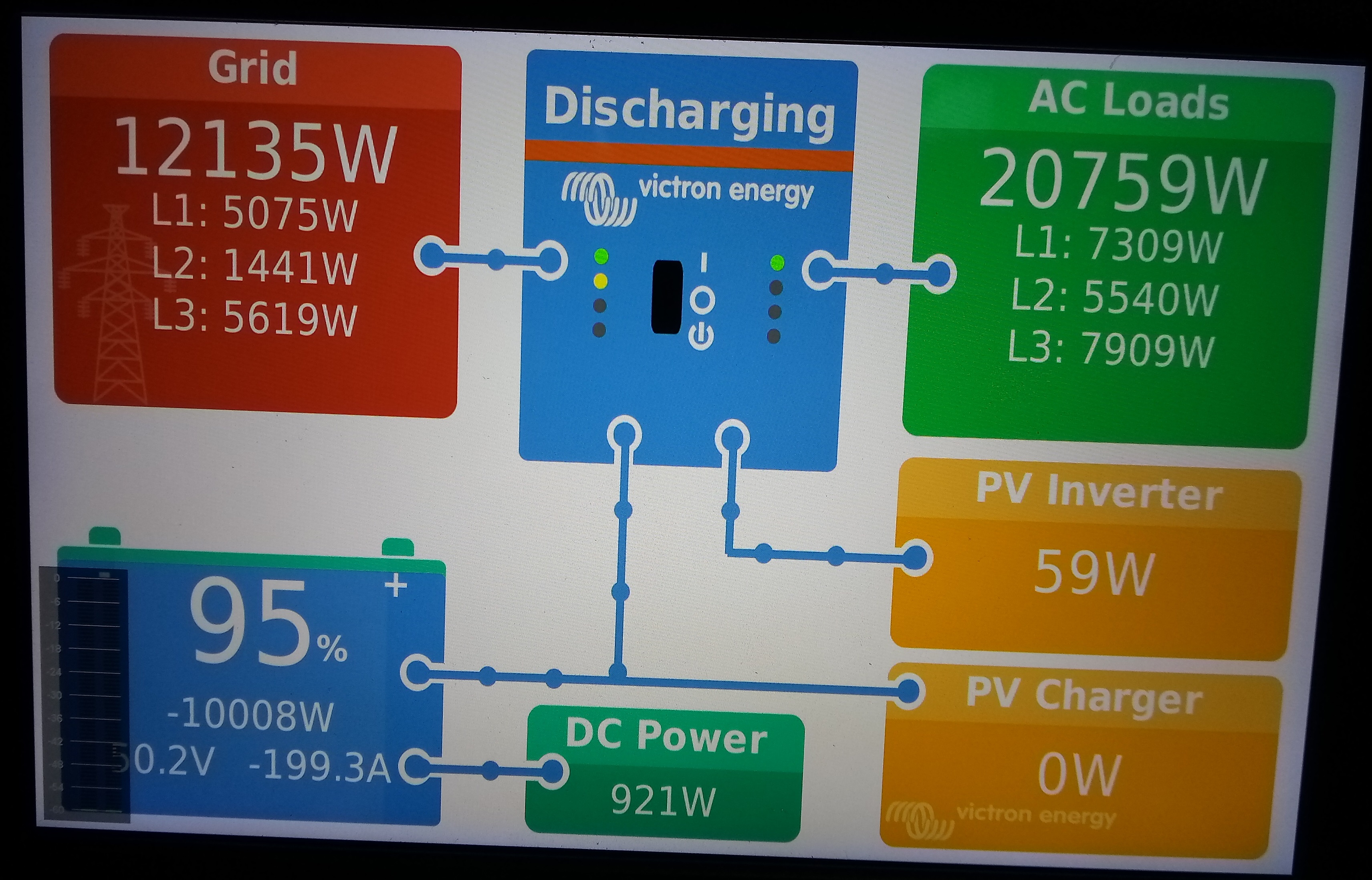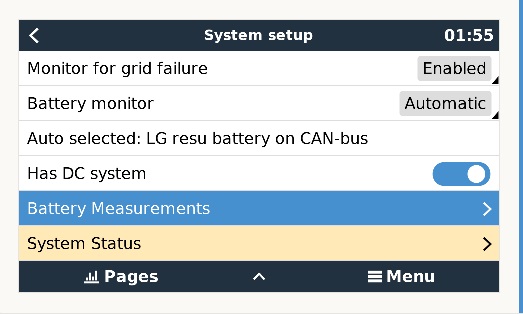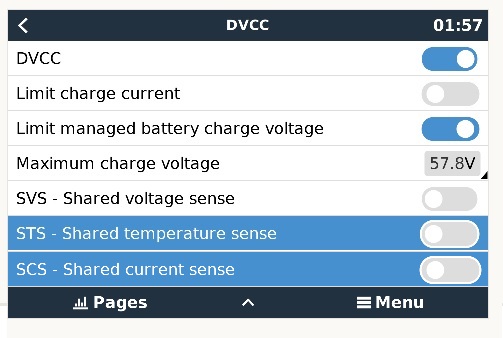Hello,
as Iam new but did all the Trainingslessions, iam not 100% sure if i did everything correctly.
Iam currently just using one Battery (yes more to come, for 1:1 Rule and Offgrid situations).
The Battery is connected via CAN-BMS and the Parameters are shown correctly in the Console:

As you can see, CCL and DCL are around 90A.
But, if I start a big Load, ESS tries to discharge with over 190A, sending my Battery in Overcurrent Alarm (Battery BMS is shutting down).

The other way around, if there is a decent load (2000Watt), the Battery is only discharged with around 1000W (20A) - letting me pay for 1000W from the Grid...
Also the Battery is max Charge with 20A, even there is more PV Power (feeding into the Grid 4000W)
I dont know whats wrong, could someone check my setting please:

 Console-Pictures are taken in the Moment the SOC Limit was reached. But the Bug/missconfiguration that iam encountering is with Full Battery, 75% SOC and so on.
Console-Pictures are taken in the Moment the SOC Limit was reached. But the Bug/missconfiguration that iam encountering is with Full Battery, 75% SOC and so on.

